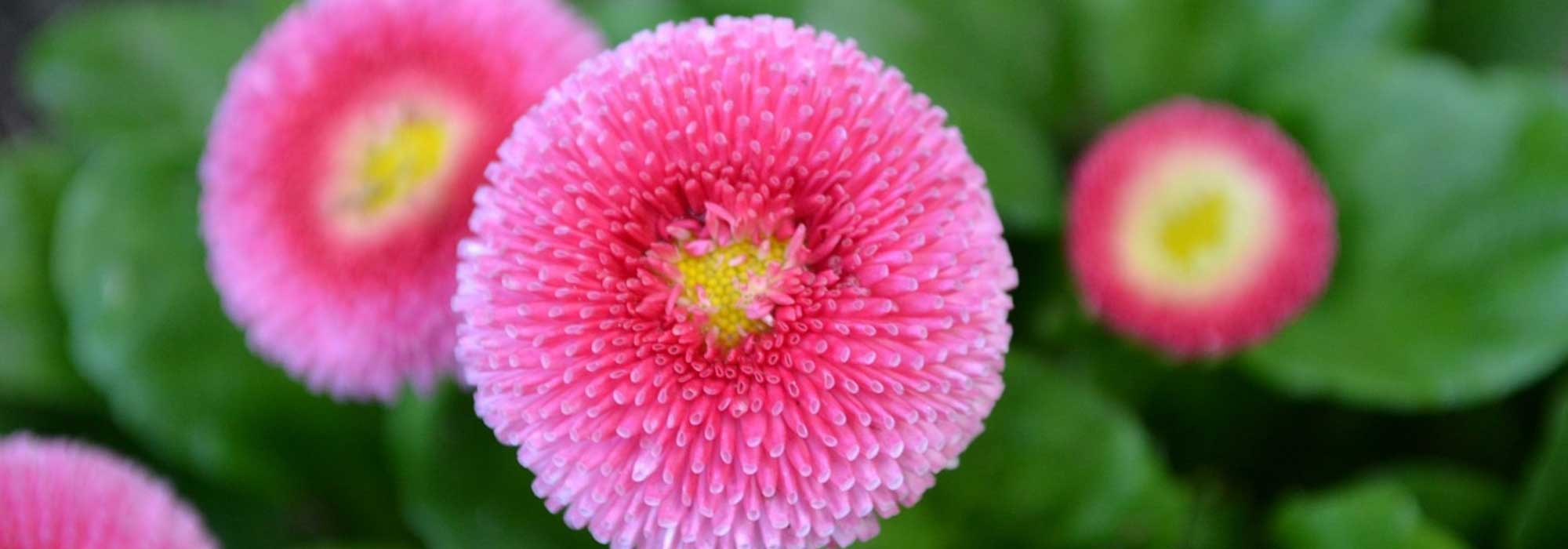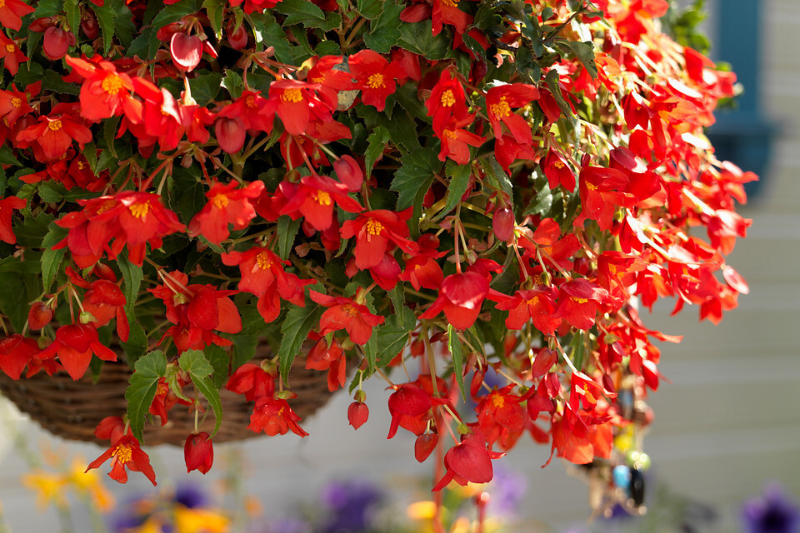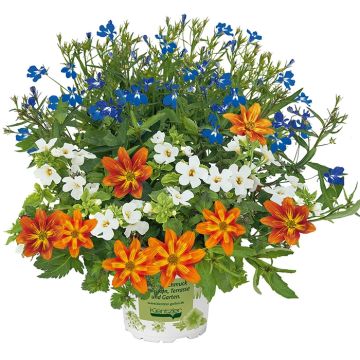

Bellis perennis Tasso Blanche - Common Daisy


Bellis perennis Tasso Blanche - Common Daisy
Bellis perennis Tasso Blanche - Common Daisy
Bellis perennis Tasso Blanche
Common Daisy, Lawn Daisy, English Daisy
Too disappointed, they're all rotten. I was hoping to have them this spring. I don't think I'll order again.
Nicole, 14/03/2023
Special offer!
Receive a €20 voucher for any order over €90 (excluding delivery costs, credit notes, and plastic-free options)!
1- Add your favorite plants to your cart.
2- Once you have reached €90, confirm your order (you can even choose the delivery date!).
3- As soon as your order is shipped, you will receive an email containing your voucher code, valid for 3 months (90 days).
Your voucher is unique and can only be used once, for any order with a minimum value of €20, excluding delivery costs.
Can be combined with other current offers, non-divisible and non-refundable.
Why not try an alternative variety in stock?
View all →This plant carries a 6 months recovery warranty
More information
We guarantee the quality of our plants for a full growing cycle, and will replace at our expense any plant that fails to recover under normal climatic and planting conditions.
Would this plant suit my garden?
Set up your Plantfit profile →
Description
Bellis perennis 'Tasso Blanche' bring freshness and innocence to the garden. Their numerous pure white pompoms with a yellow centre brighten up the early spring. Plant them in hanging baskets or at the front of flower beds, where they will weave their way between bulbs. Resistant to cold and generously floriferous, they will delight novice gardeners.
Belonging to the Asteraceae family, daisies represent innocence and attachment in the language of flowers. This is undoubtedly what attracts children and makes us want to sprinkle them throughout the garden to welcome spring.
Originally a perennial, it is now used as a biennial. It prefers moist but well-drained soils. Its height of 15cm (6in) makes it ideal for placing along the edge of flower beds, in front of daffodils and tulips. It will also work well among pansies and forget-me-nots in pots and planters. Its base consists of a rosette of dark green leaves, from which several hairy stems emerge, bearing a single head at their top. These pompom-shaped flowers are both simple and impressive: they are small, slightly flattened balls (3cm (1in) in diameter), made up of multiple very fine petals, positioned very densely with geometric regularity. If you do not use any treatments, you can even consume them by adding these small coloured filaments to your dishes, as they are edible.
Bellis perennis live up to their name, which means "eternal beauties". Their colourful pompoms will brighten the garden from February to May. Plant them in pots near entrances and on patios. They easily fit in between spring bulbs, offering a contrast to pastel shades. They will fit effortlessly in every corner of the garden and complement spaces in compositions.
Note: Please be aware that our plug plants are professional products reserved for experienced gardeners: upon receipt, repot them as soon as possible, in pots, containers, or directly in flower beds.
Bellis perennis Tasso Blanche - Common Daisy in pictures


Flowering
Foliage
Plant habit
Botanical data
Bellis
perennis
Tasso Blanche
Asteraceae
Common Daisy, Lawn Daisy, English Daisy
Cultivar or hybrid
Other Daisies
View all →Planting and care
Upon receipt, transplant the plugs into pots or planters. They prefer a sunny exposure or partial shade. If you wish to plant them in the ground, first transplant them into a pot. Monitor watering but do not saturate the soil. Regularly apply fertiliser (about twice a month). There is no need to keep them in a greenhouse, as they will be content with a sheltered spot. In September or even October, you can transplant them directly into their final position. Slugs and snails are fond of their young shoots, a line of ash around the base will protect them. Remove faded flowers to stimulate the growth of new buds.
Planting period
Intended location
Care
Planting & care advice
-
, onOrder confirmed
Reply from on Promesse de fleurs
Similar products
Haven't found what you were looking for?
Hardiness is the lowest winter temperature a plant can endure without suffering serious damage or even dying. However, hardiness is affected by location (a sheltered area, such as a patio), protection (winter cover) and soil type (hardiness is improved by well-drained soil).

Photo Sharing Terms & Conditions
In order to encourage gardeners to interact and share their experiences, Promesse de fleurs offers various media enabling content to be uploaded onto its Site - in particular via the ‘Photo sharing’ module.
The User agrees to refrain from:
- Posting any content that is illegal, prejudicial, insulting, racist, inciteful to hatred, revisionist, contrary to public decency, that infringes on privacy or on the privacy rights of third parties, in particular the publicity rights of persons and goods, intellectual property rights, or the right to privacy.
- Submitting content on behalf of a third party;
- Impersonate the identity of a third party and/or publish any personal information about a third party;
In general, the User undertakes to refrain from any unethical behaviour.
All Content (in particular text, comments, files, images, photos, videos, creative works, etc.), which may be subject to property or intellectual property rights, image or other private rights, shall remain the property of the User, subject to the limited rights granted by the terms of the licence granted by Promesse de fleurs as stated below. Users are at liberty to publish or not to publish such Content on the Site, notably via the ‘Photo Sharing’ facility, and accept that this Content shall be made public and freely accessible, notably on the Internet.
Users further acknowledge, undertake to have ,and guarantee that they hold all necessary rights and permissions to publish such material on the Site, in particular with regard to the legislation in force pertaining to any privacy, property, intellectual property, image, or contractual rights, or rights of any other nature. By publishing such Content on the Site, Users acknowledge accepting full liability as publishers of the Content within the meaning of the law, and grant Promesse de fleurs, free of charge, an inclusive, worldwide licence for the said Content for the entire duration of its publication, including all reproduction, representation, up/downloading, displaying, performing, transmission, and storage rights.
Users also grant permission for their name to be linked to the Content and accept that this link may not always be made available.
By engaging in posting material, Users consent to their Content becoming automatically accessible on the Internet, in particular on other sites and/or blogs and/or web pages of the Promesse de fleurs site, including in particular social pages and the Promesse de fleurs catalogue.
Users may secure the removal of entrusted content free of charge by issuing a simple request via our contact form.
The flowering period indicated on our website applies to countries and regions located in USDA zone 8 (France, the United Kingdom, Ireland, the Netherlands, etc.)
It will vary according to where you live:
- In zones 9 to 10 (Italy, Spain, Greece, etc.), flowering will occur about 2 to 4 weeks earlier.
- In zones 6 to 7 (Germany, Poland, Slovenia, and lower mountainous regions), flowering will be delayed by 2 to 3 weeks.
- In zone 5 (Central Europe, Scandinavia), blooming will be delayed by 3 to 5 weeks.
In temperate climates, pruning of spring-flowering shrubs (forsythia, spireas, etc.) should be done just after flowering.
Pruning of summer-flowering shrubs (Indian Lilac, Perovskia, etc.) can be done in winter or spring.
In cold regions as well as with frost-sensitive plants, avoid pruning too early when severe frosts may still occur.
The planting period indicated on our website applies to countries and regions located in USDA zone 8 (France, United Kingdom, Ireland, Netherlands).
It will vary according to where you live:
- In Mediterranean zones (Marseille, Madrid, Milan, etc.), autumn and winter are the best planting periods.
- In continental zones (Strasbourg, Munich, Vienna, etc.), delay planting by 2 to 3 weeks in spring and bring it forward by 2 to 4 weeks in autumn.
- In mountainous regions (the Alps, Pyrenees, Carpathians, etc.), it is best to plant in late spring (May-June) or late summer (August-September).
The harvesting period indicated on our website applies to countries and regions in USDA zone 8 (France, England, Ireland, the Netherlands).
In colder areas (Scandinavia, Poland, Austria...) fruit and vegetable harvests are likely to be delayed by 3-4 weeks.
In warmer areas (Italy, Spain, Greece, etc.), harvesting will probably take place earlier, depending on weather conditions.
The sowing periods indicated on our website apply to countries and regions within USDA Zone 8 (France, UK, Ireland, Netherlands).
In colder areas (Scandinavia, Poland, Austria...), delay any outdoor sowing by 3-4 weeks, or sow under glass.
In warmer climes (Italy, Spain, Greece, etc.), bring outdoor sowing forward by a few weeks.




















































